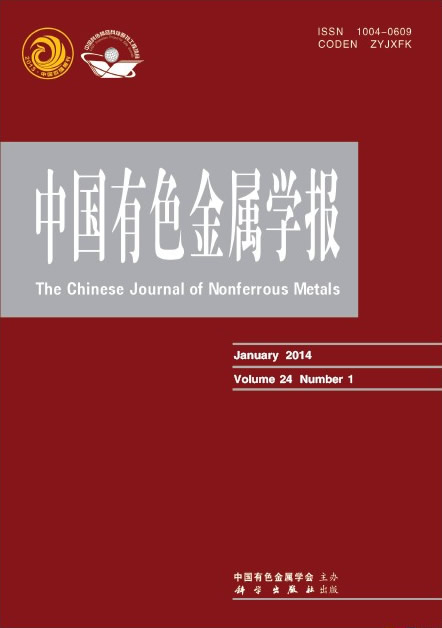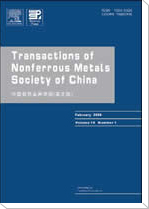(1. 河南科技大学 材料科学与工程学院,洛阳 471023;
2. 河南省耐磨材料工程技术研究中心,洛阳 471003;
3. 河南省高温结构与功能材料重点实验室,洛阳 471003)
摘 要: 针对目前溶液体系中铼和钼分离困难的问题,通过树脂选型确定选用中强碱性阴离子交换树脂Purolite A172分离铼和钼,研究A172树脂对铼的吸附性能和对铼-钼的分离性能。结果表明:A172树脂吸附铼的反应为放热反应,而且吸附速率很大,吸附速率常数k298 K=7.719×10-4 s-1,受内扩散控制,树脂对铼的静态饱和吸附容量达到340.13 mg/g湿树脂;当铼溶液pH=9、摇床往复震荡速率110 r/min、摇床水浴温度25 ℃、吸附时间1 h时,树脂对铼的吸附量最大;当以浓度为2 mol/L硫氰酸铵为解吸剂,在溶液pH=5、摇床往复震荡速率150 r/min、摇床水浴温度50 ℃下解吸5 h时,铼的解吸率最高,达到99.19%。大量的钼会阻碍铼的吸附,但随着吸附时间的延长,被吸附的钼逐渐被铼取代,铼和钼的分离因数最大值达到1192;解吸时,负载的钼对铼的解吸也有抑制作用,随着钼铼质量比的增加,铼的解吸率降低。
关键字: 铼;钼;Purolite A172;离子交换
(1. School of Materials Science and Engineering, Henan University of Science and Technology, Luoyang 471023, China;
2. Henan Engineering Research Center for Wear of Material, Luoyang 471003, China;
3. Henan Key Laboratory of High-temperature Structural and Functional Materials, Luoyang 471003, China)
Abstract:In order to solve the separation problem of rhenium(Re) and molybdenum(Mo) in aqueous solution system, the medium basic anion exchange resin Purolite A172 was used to separate Re and Mo through the resin selection experiment. The adsorption characteristics of Re and separation behavior for Re-Mo system using A172 resin were studied respectively. The results show that the adsorption of Re by A172 resin is an exothermic reaction, the adsorption rate is very fast and the constant is k298 K=7.719×10-4 s-1. The adsorption reaction is limited by internal diffusion, and the static saturated adsorption capacity of A172 on Re reaches 340.13 mg/g swollen resin. The maximum adsorption capacity are obtained at pH=9, reciprocating concussion rate of 110 r/min, bath temperature of 25 ℃and adsorption time of 1 h. Meanwhile, the desorption rate of Re can reaches 99.19% when the desorption reaction are using ammonium thiocyanate as desorption agent with concentration of 2 mol/L, pH=5, reciprocating concussion rate of 150 r/min, bath temperature of 50 ℃, and desorption time of 5 h. A large amount of Mo will hinder the adsorption of Re. However, with the extension of adsorption time, adsorbed Mo will gradually be replaced by Re, therefore, the separation factor of Re and Mo increases gradually and reaches the maximum value of 1192. In desorption experiment, the loaded Mo inhibit the desorption of Re, and the greater the Mo content, the more obvious the inhibition effect.
Key words: rhenium; molybdenum; Purolite A172; ion exchange


